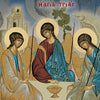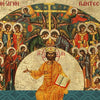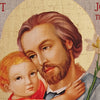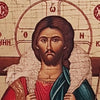Exploring the world of the Byzantium

The European Centre for Byzantine and Post-Byzantine Monuments offers to all those interested, through its website dealing with the education and the promotion of Byzantine culture, the possibility of distance learning about the culture that is linked with the development and the spread of Christianity.
The thematic essays of the exploringbyzantium website are divided into various categories, such as Cities in Byzantium, Social Life in Byzantium, Science and Technology, forms of Communication, Byzantine Warfare, Private and the Public, and the Byzantine Customs and Traditions. In the Byzantine Customs and Traditions section are described four major stages of life: birth, baptism, marriage, death and burial, and the main traditions associated with them. All the traditions and the customs involving the cycle of life from birth to death were linked to religious traditions.
Birth in the Byzantine family
Birth was a very joyous event and child-bearing was generally related to the consummation of marriage and fulfilled its social purpose. The birth was accompanied by a multitude of gifts, fruits, nuts, and sweets, while is several cases money was also given. Birth was followed by baptism which in the early years of Christianity took place at an old age. Gradually the age of 3 years was introduced and later, in the 6th century, children had to be baptized during infancy.
The name given to the child was usually that of their grandfathers and their grandmothers but the prelates, especially from the 4th century onwards, urged parents to give their children names of Saints. If you wish to explore the life of the Byzantines you will find a lot of useful information at the portal exploringbyzantium.gr
-
Posted in
Theological Issues





